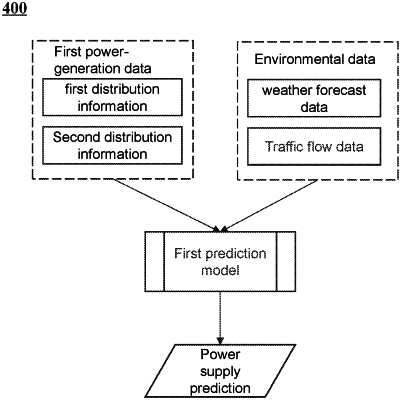| CPC H02J 3/004 (2020.01) [H02J 3/144 (2020.01)] | 11 Claims |

|
1. A method of power-supply management in a smart urban based on Internet of things (IoT), performed by an urban power-supply management platform of a system for power-supply management in the smart urban based on IoT, wherein the system is a part of a processing device or implemented by the processing device; and the system further comprises a sensor network platform and an object platform, wherein
the urban power-supply management platform realize overall planning and coordination of connection and cooperation between various functional platforms; and the urban power-supply management platform gathers information of an operating system of the IoT, and provides perceptual management and control management functions for the operation system of the IoT;
the sensor network platform connects the urban power-supply management platform and the object platform, and plays functions of perceptual information sensing communication and control information sensing communication; and the sensor network platform is configured as a sensor network management server;
the object platform is a functional platform for performing perceptual information generation and control information; the sensor network platform communicates with the object platform, wherein the object platform is configured as a collection terminal and configured to obtain second power-generation data, and the collection terminal includes an intelligent meter or an energy router; wherein the smart meter is configured to collect self-power-generation data from each residential user, and the energy router is configured to collect self-power-generation data from multiple residential users in one or more communities;
the method comprising:
obtaining first power-generation data by the urban power-supply management platform communicating with the sensor network platform, wherein the first power-generation data is determined by summarizing the second power-generation data through network communication between the sensor network platform and the collection terminal, and the second power-generation data is residential self-power-generation data; wherein the second power-generation data is obtained from the collection terminal by the sensor network platform; wherein the first power-generation data is determined based on a process including:
sending, by the urban power-supply management platform, division of power generation modes and distribution information of power generation modes to the sensor network platform; determining, by the sensor network platform, the collection terminal according to the division of power generation modes; sub-dividing, by the urban power-supply management platform, area information according to dividing areas of the sensor network platform, sending a sub-division result to the sensor network platform, and determining, by the sensor network platform, the first power-generation data according to the sub-division result;
determining, by a first prediction model, a power-supply prediction based on the first power-generation data and environmental data; wherein
the first power-generation data includes at least one of first distribution information and second distribution information of the residential self-power-generation data, wherein the first distribution information includes distribution information according to power-generation mode, and the second distribution information includes distribution information according to time; and
the environmental data includes weather forecast data and traffic flow data; wherein the environmental data is obtained from the storage device or through invoking weather API by the urban power-supply management platform; and
transmitting, by the urban power-supply management platform, the power-supply prediction to a power-supply company through the sensor network platform; and
adjusting, by the power-supply company, power supply of different areas based on the power-supply prediction.
|